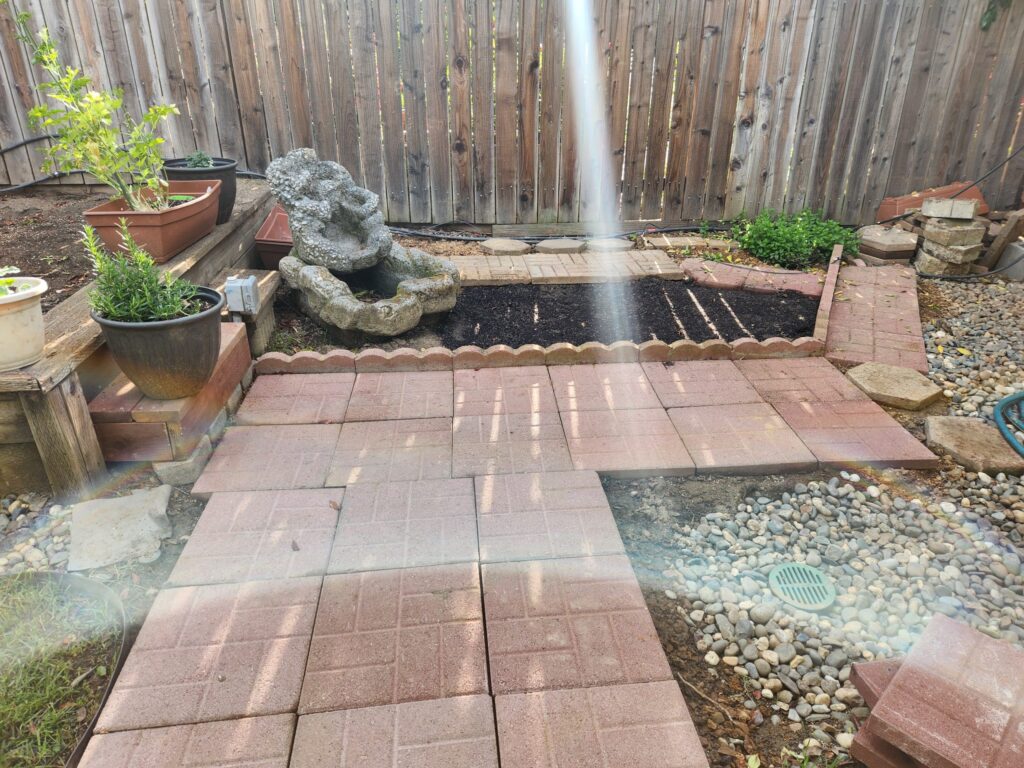The handful of people who really know me, know that I have a few favorite hobbies… one of which is “gardening”. Yeah, I put that into quotes because for me, its more than just planting a few flowers. I kind of enjoy mowing every week (but not in the winter when there isn’t need). Some weeding is actually enjoyable: you get a chance to take a closer look at the other work right there and really appreciate it. Some flowers are good, but I’m really more so into an edible garden. I actually enjoy getting my hands dirty and building things. Much of my teenage years was spent digging over 100 yards of trenches for irrigation. So when I first bought this house I saw a blank slate in the yard of what I could do. This post covers just the backyard herb and veggie garden hardscape.
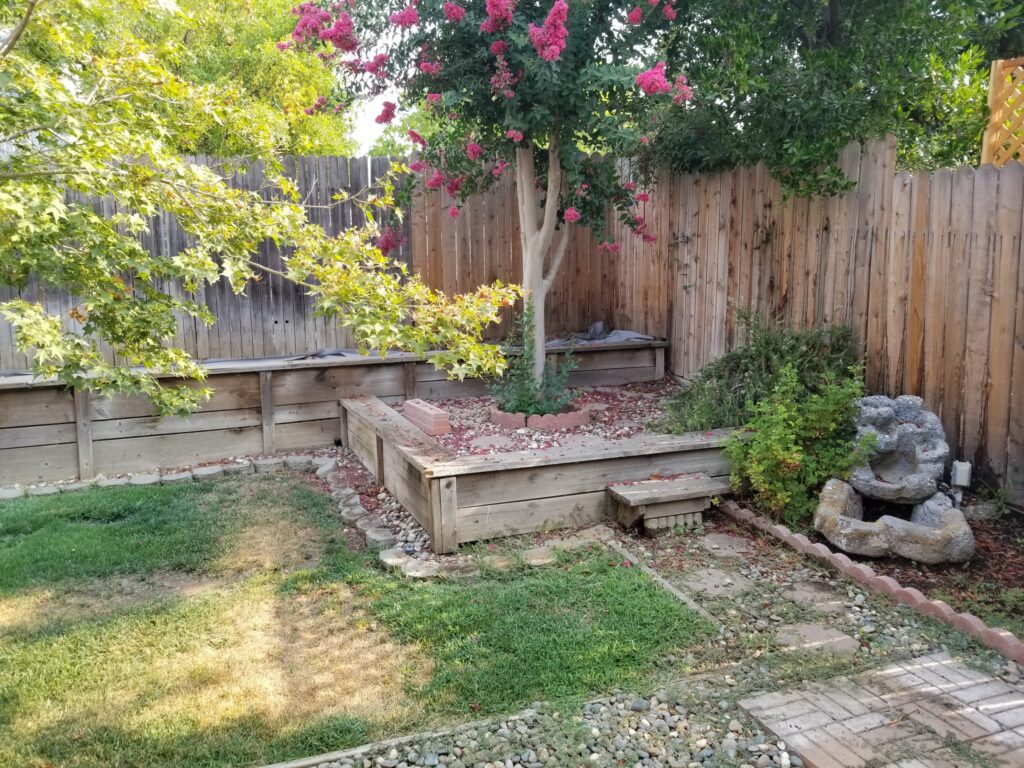
This is mostly what I was starting with. Actually, that back fence, you couldn’t really see: it was almost completely covered by a dozen overcrowded sick trees and a dozen oleandars (in only 60 linear feet!). I actually personally (just me, no help) replaced all of that fence myself. This area may look “nice ish”, and perfect for some people. However, when I look at it, I see very little… life. The grass struggles with looking good there and there is quite frankly too much of it in the first place. That small is bed off to the right was barely there before: I widened it. And that lower raised box: all you can see is rock. And a craype myrtle. Actually, that tree was kind of struggling due to the neighbor’s 50 foot tall tree. So, all of the flowers and leaves and growth were in the 20 to 40 foot range! So, I pulled a Paul Bunyon…
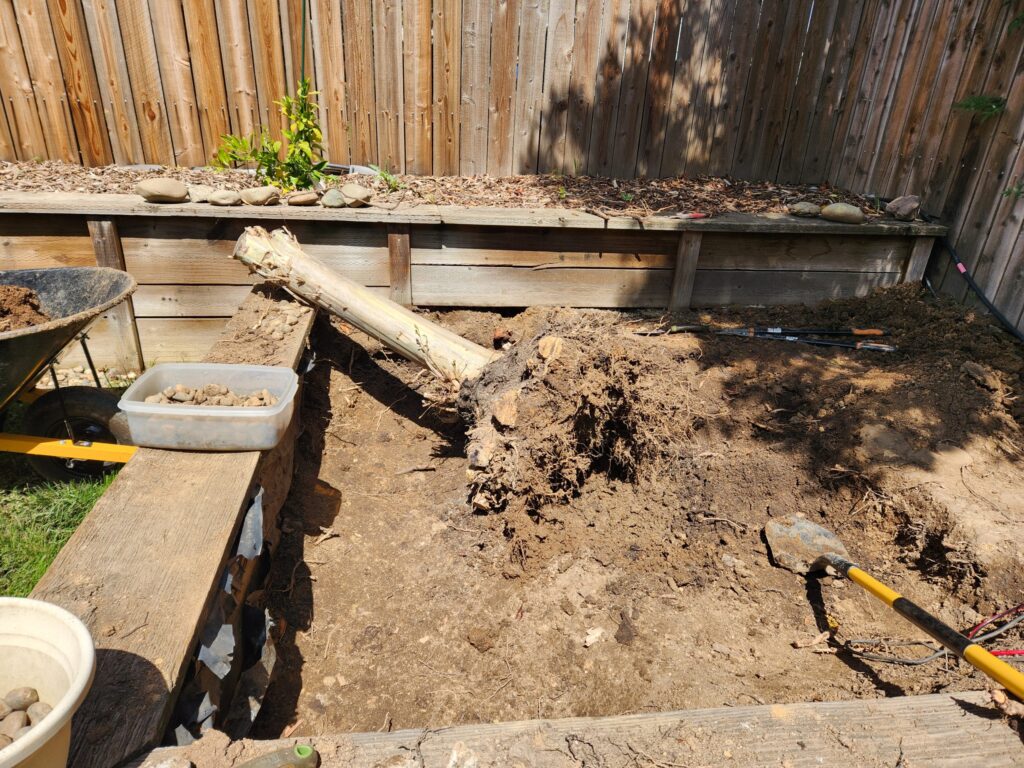
What did I discover in that raised bed? Rock. On top of more rock. On top of a substantial layer of clay (and random chunks of concrete, pipes and 2x4s). Hardly no vegitation can grow in clay, let alone something yummy to eat. And that clay sat firmly on top of… sandstone! And none of that will do. This photo was taken in April 2023. Much later into the Northern California summer heat and the clay will harden, like a clay pot. So, I had to wait until after a few atmospheric rivers came through here to soften things up.
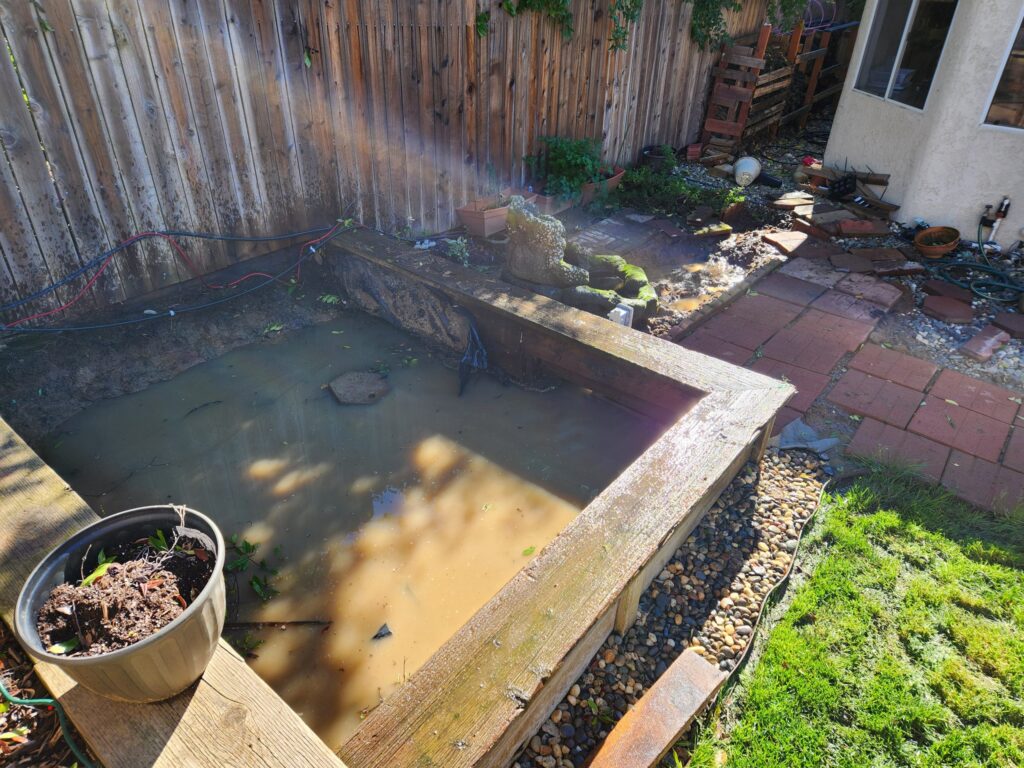
THAT was a lot of work! No, it did not happen all in one or two sessions… a lot of the clay had been removed across 3 or 4 days in the prior spring. Then, I needed some help from those famous (infamous?) Northern California Atmospheric Rivers… Then another 3 or 4 more sessions to really get that remaining clay out and a few inches of the sand stone . That raised bed is surrounded by two stacked 2×6, plus the 2×12 top. The bottom of the bed is roughly 3 inches below that. The important thing from a design perspective: that 2 inches between the bottom of the wood and the rock functions as the drainage. That standing water is why I had to do what I did. This photo was taken two weeks after the last atmospheric river flowed through here. That water is still standing, probably raising a few mosquitoes because… that stupid sand stone will not drain or absorb water.
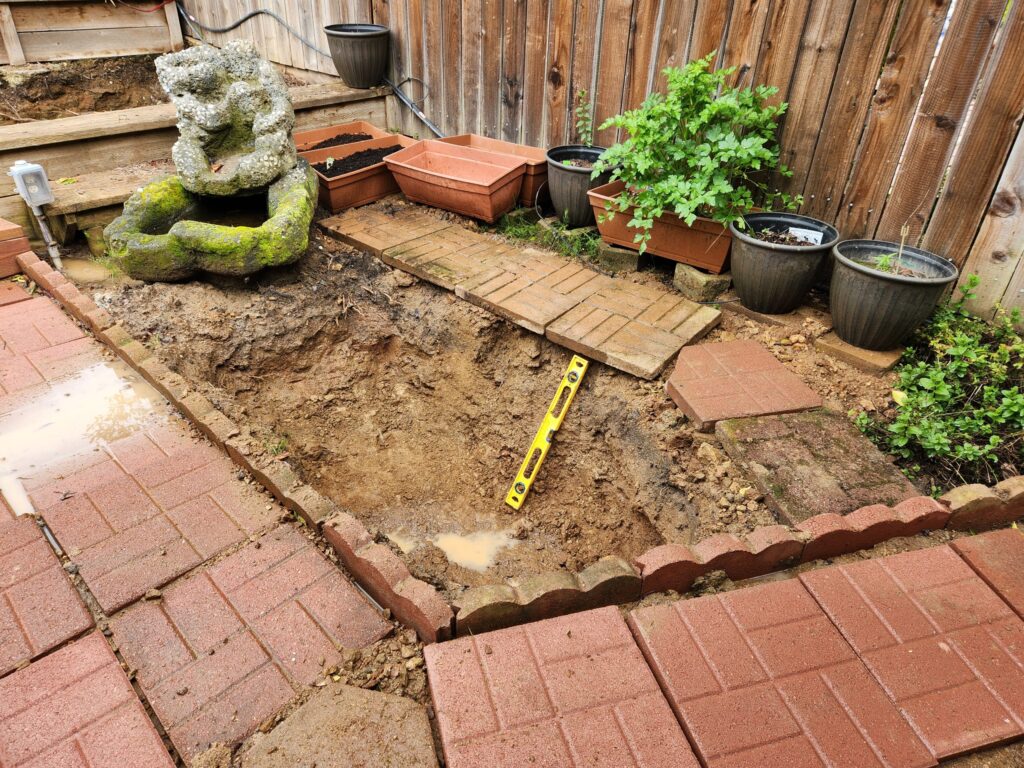
The raised bed in the back was a different kind of task than this sunken bed. The back bed had pre-defined borders. This bed was a mystery. That old fountain was moved to where you see it now, which is most likely its permanent home. The electrical outlet was where you see those stepping stones in the back: it had to be moved. All of this hole in the ground and the surrounding areas at the bottom of the photo were rock. The path to the left is just two stones wide to give a front border and access to the lower raised bed. Then, I had to dig. Some of what was in that hole has been moved to the top. The rest is slated to be permanently removed from the property. That level that you see in there is 2 feet long. It helps give us a visual perspective of how deep that hole really is. To make this area work and look like this was easily about a hundred hours, spread across the last 12 months!
The next step was to actually anchor the wood step into the box. All 48 stepping stones needed to be moved several times, getting them really snug next to each other and flat, which involved moving more clay and sandstone around. Plus, the holes needed to be filled in with actual soil!
